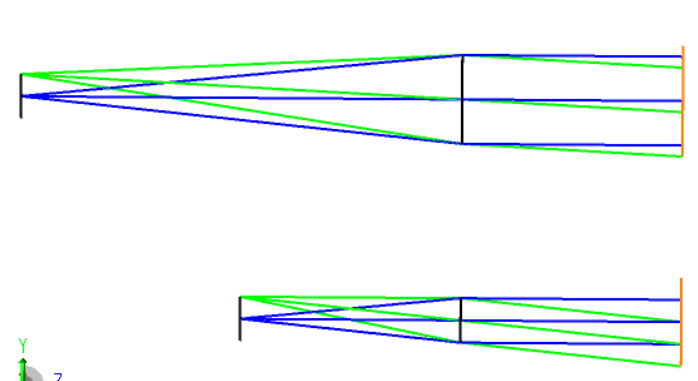So I got 2 converging Fresnel lenses, one with 50 mm focal length and other 70 mm.
My experiment looks like this:

When trying to focus and SMD LED emitter into a narrow beam (sticking to lenses focal length accordingly), the one with shorter focal length gives bigger divergence (measuring spot on the wall).
I assume this has something to do with smaller angle of incidence, but running the simulation with "ideal" lens shows no difference in divergence between two cases with different angle of incidence. (On the figure 2, distance between A and b is equal)
Also, I am not sure whether they are aspherical (does it apply to fresnels?) and if no maybe this is the issue?


